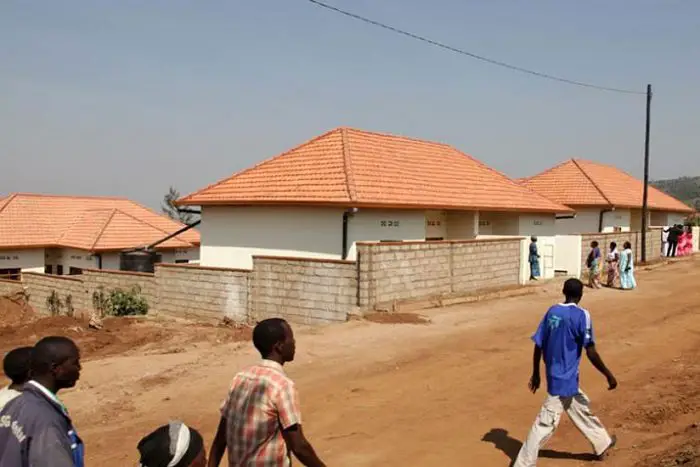The government will pursue a plan to set aside planned settlement sites in different parts of the country and invest in building ‘model villages’ there as part of the latest efforts to modernise rural settlements, officials at the Rwanda Housing Authority (RHA) have said.
They delivered the message recently to the media on the occasion to celebrate the World Habitat Day which normally falls on every first Monday of October annually.
As part of modernising rural settlements, the RHA has asked every district in the country to set aside at least one planned settlement site where the government can build homes for indigent people living in high-risk zones and other well-off residents can build their own homes there too.
Dubbed ‘model villages’, the modern settlement sites will be absolutely connected to essential infrastructure like roads, water, electricity, schools, health posts, and local markets.
RHA officials said at a press conference in Kigali yesterday that the government has targeted that at least 30 sites, one in each of the country’s 30 districts, will have been set aside and provided with roads, water, and electricity before the end of the current fiscal year 2016-2017 in June.
“Rwandans need to liberate themselves from inappropriate habitat. They need to understand that living in village settlement sites (imidugudu) helps to scale up access to infrastructure,” said Eng. Didier Sagashya, Director General of the RHA.
Under the country’s Vision 2020, the government has planned that at least 70 per cent of Rwandans in rural areas will be living in planned settlements by the year 2020.
The current rate is 55.8 per cent according to the most recent national household survey, the fourth Integrated Household Living Conditions Survey (EICV4), which was published in September 2015.
Giving an example of Rweru model village in Eastern Province’s Bugesera District, where the government settled 104 families from high-risk zones in the district’s Mazane and Sharita islets, officials at the RHA said that a replica of the Rweru village is envisaged in the 30 settlement sites that will be set aside across the country.
The head of human settlement, planning, and development at RHA, Augustin Kampayana, said that the government would like residents in high risk zones and other people who want to move to the provided sites.
“We want to sensitise Rwandans who currently live in high risk zones to come and build their homes in these sites,” Kampayana said, also explaining that the government will build homes for needy residents at the sites.
The Rweru village, which has been described by officials at RHA as a prototype for ‘model villages’, has been provided with a school of 17 classrooms, a health post, connection to electricity and water for all houses, internet connection, a modern market and workshop place (locally called agakiriro) and a 12-kilometre road linking the village to the nearest trading centre.
Rweru village was inaugurated by President Paul Kagame during this year’s celebrations to mark the 22nd Liberation Day on July 4, having been constructed through the Army Week, an outreach activity by the Rwanda Defence Force (RDF).
Officials at the RHA said yesterday that the government will invest about Rwf30 billion in the current fiscal year to bring basic infrastructure such as roads, water, and electricity to the planned 30 settlement sites across the country.
They also called upon stakeholders from the civil society such as private entrepreneurs and faith-based organisations to invest in the project by pledging to bring some services to the model villages such as building schools and health centres.
Building model villages will help in efforts to use the country’s scarce land resources more efficiently through land consolidation for higher yields from arable land, while also championing improved housing, officials said.
With a land spanning 26,338 square kilometres, Rwanda is one of the world’s smallest countries but remains among the most densely populated in Africa.

